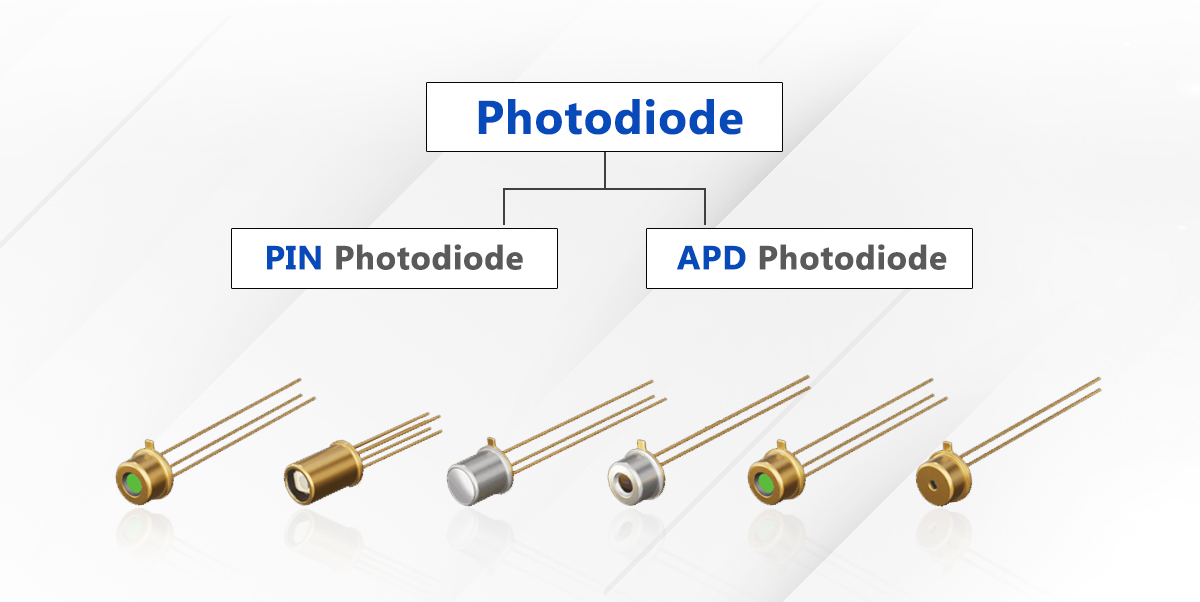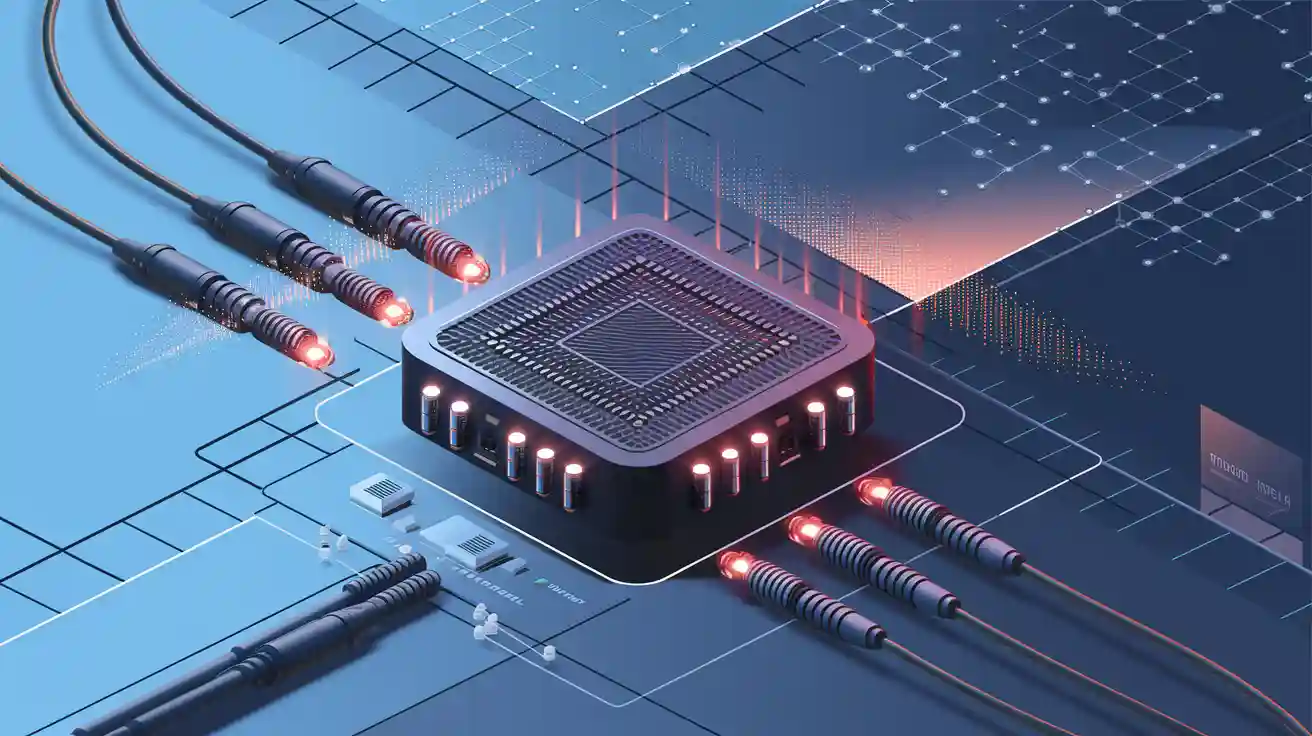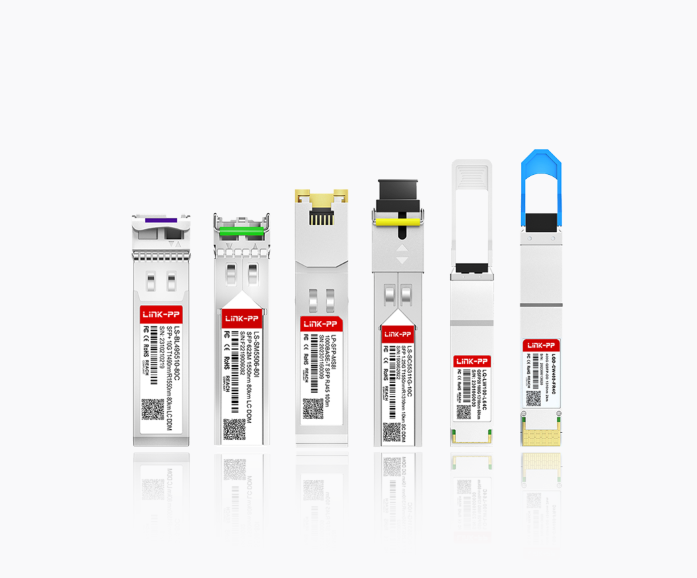
In the realm of fiber optic communication, photodetectors, or photodiodes play a pivotal role in converting optical signals into electrical data. As a core component of optical transceiver modules, these devices ensure seamless high-speed data transmission across networks. This article explores the concept, working principles, types, differences, and applications of photodiodes, while introduce some optical module from LINK-PP that integrate PIN and APD photodiode.
What is Photodiode?
A photodiode is a semiconductor device that converts light into electrical current. In optical transceiver modules, it acts as the receiver, detecting incoming optical signals and transforming them back into electrical data. Photodiodes are essential for ensuring high-speed, low-loss communication in fiber-optic systems.
How Do Photodiodes Work?
Photodiodes operate based on the photovoltaic effect. When photons (light particles) strike the semiconductor material (e.g., silicon, indium gallium arsenide), they generate electron-hole pairs. This creates a measurable current proportional to the light intensity. In optical transceivers, this process enables the conversion of modulated light pulses into digital electrical signals.
Key steps:
Light Absorption: Light enters the photodiode through the optical fiber.
Carrier Generation: Photons are absorbed by the semiconductor, creating charge carriers.
Current Flow: An external circuit measures the resulting current for signal processing.
Types of Photodiodes in Optical Transceivers
Photodiodes are categorized based on their structure and performance:
a. PIN Photodiodes
Structure: A p-type, intrinsic (undoped), and n-type semiconductor layer.
Advantages: Low noise, cost-effective, suitable for short-range applications (e.g., data centers).
Use Case: LINK-PP 100G QSFP28 transceivers LQ-M85100-SR4C is used for high-speed, short-reach communication.
b. Avalanche Photodiodes (APD)
Structure: Includes a high-voltage bias to create an "avalanche" effect, amplifying the signal.
Advantages: Higher sensitivity, ideal for long-haul or low-light scenarios.
Use Case: Long-range optical transceiver modules LQ-LW100-ZR4C is used for telecom networks.
Comparing PIN and Avalanche Photodiodes
Parameter | PIN Photodiode | Avalanche Photodiode (APD) |
|---|---|---|
Sensitivity | Moderate | High (signal amplification) |
Cost | Lower | Higher |
Complexity | Simple design | Requires precise voltage control |
Application | Short-range (≤10 km) | Long-range (>40 km) |
For instance, LINK-PP optical transceiver components leverage APDs in their 400G ZR+ coherent modules for ultra-long-haul networks, while PIN diodes power their cost-efficient data center solutions.
Applications in Modern Communication
Photodiodes enable diverse applications across industries:
Telecom Networks: APDs in coherent transceivers support 5G backhaul and metro networks.
Data Centers: PIN photodiodes drive high-speed optical transceiver modules like 200G FR4 and 400G DR4.
Medical Imaging: Low-noise photodiodes ensure precision in optical coherence tomography (OCT).
Industrial Sensors: Used in LiDAR and automation systems for accurate light detection.
Why Choose LINK-PP Optical Transceivers?
LINK-PP integrates cutting-edge photodiode technology to deliver reliability and scalability. Their optical transceiver solutions are optimized for:
Low Latency: Ideal for high-frequency trading and AI workloads.
Energy Efficiency: Reduced power consumption for eco-friendly data centers.
Compatibility: Supports multi-vendor networks with IEEE and MSA standards.
Conclusion
Photodiodes are indispensable in optical transceivers, balancing speed, sensitivity, and cost for modern networks. Whether deploying QSFP-DD modules for hyperscale data centers or APD-based systems for telecom, understanding photodetector technology ensures optimal performance. As demand for bandwidth grows, innovations in photodiode design will continue to shape the future of optical communication.
FAQ
What is the main advantage of an avalanche photodiode?
It amplifies weak signals internally, making it ideal for detecting low-intensity light in challenging environments.
How does photodiode operation differ between PIN and avalanche photodiodes?
PIN photodiodes convert light directly into current. Avalanche photodiodes amplify the current through electron multiplication.
Can avalanche photodiodes be used in high-speed applications?
Yes, their fast response time and high sensitivity make them suitable for high-speed optical communication systems.
See Also
The Importance of Digital Monitoring in Optical Transceivers
Exploring WDM Technology and Its Role in Optical Networks
Understanding TOSA's Role and Significance in Optical Modules




